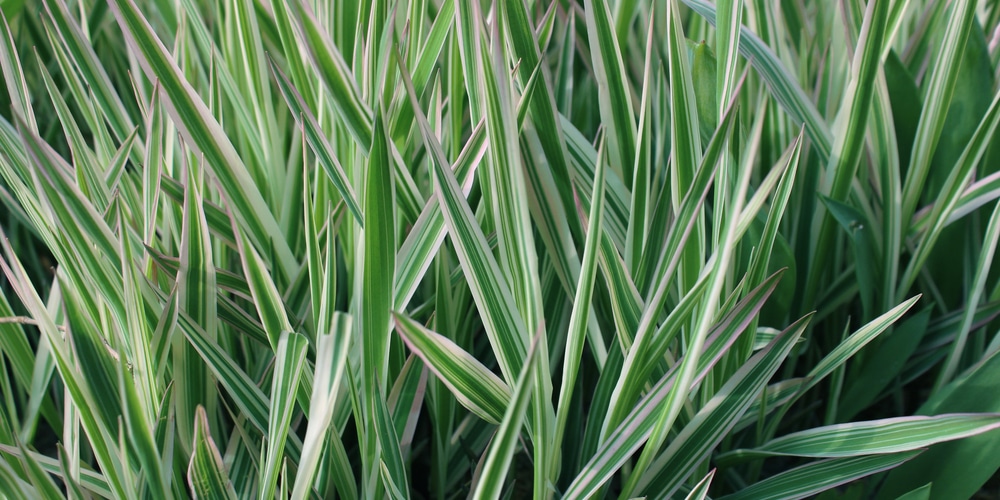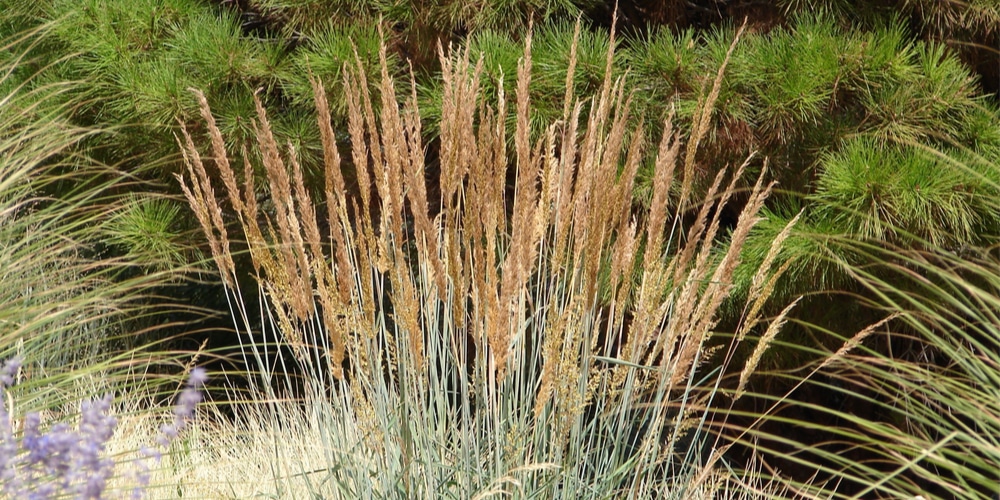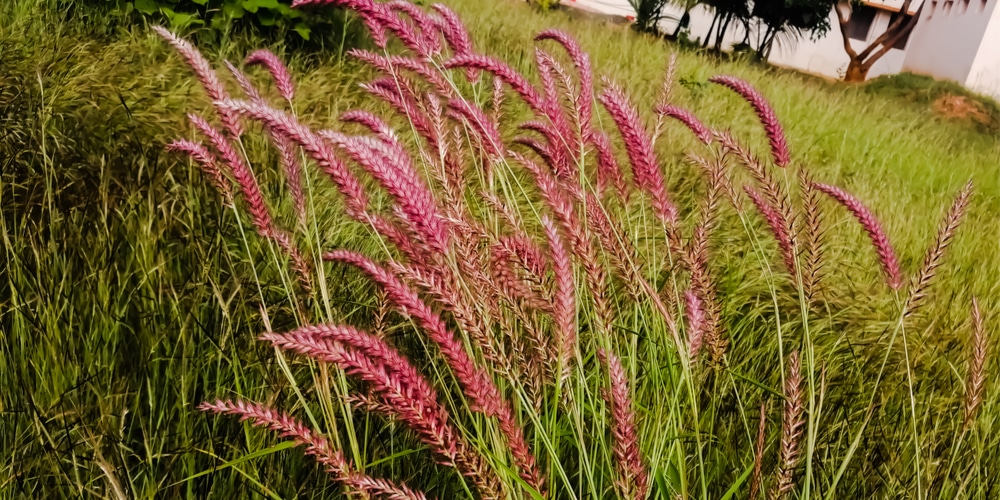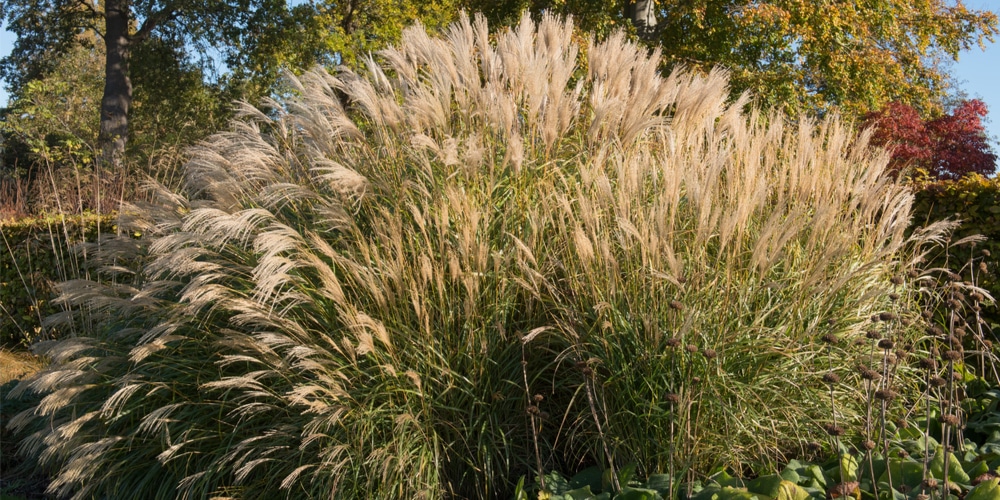Winter brings a cold, stark beauty to your yard, but growing ornamental grasses will add color and texture, even on the dullest of days. The leaves have fallen from the trees, and the flowers are gone, but the seed heads of ornamental grasses can remain for months adding interest to the winter landscape.
Grasses may be evergreen or deciduous, clumping or spreading, depending on species and growing conditions. There are so many different types of ornamental grasses that it is almost a certainty you will find several species that can be used in your garden or landscape to create a winter look.
What happens to ornamental grass during the winter?
Ornamental grasses in the garden will not be the same all year long. Once their growing season is finished, they begin to look a bit ragged until spring comes and new growth starts up again. The fall and winter period is when ornamental grasses
are most beautiful, with seed heads remaining after the flowers have died back. Many summer-flowering species continue to grow foliage through winter, but that foliage often looks ratty by spring.
Some species of ornamental grass have foliage that stays fresh all winter long. These are generally cool-season grasses. Blue oat grass is a plant that holds its blue-gray leaves over winter but doesn’t grow much and doesn’t produce flowers.
Many ornamental grasses will stay green during mild winter weather but turn brown at the first sign of frost. Once the ground freezes solid, ornamental grasses stop growing even though it is still technically possible for them to do so. But ornamental grass foliage may be killed off by a serious late-winter freeze.
What types of ornamental grass are best for wintertime?
There are hundreds upon hundreds of different species and varieties of ornamental grasses on the market. Some work better than others for creating winter interest. Here are some of the most popular ornamental grass for winter. These plants not only add color to your landscape but can also attract birds and wildlife that are looking for food and shelter:
Blue Oat Grass, Helictotrichon sempervirens
Blue oat grass is a clumping perennial that’s a cool-season grass that grows well in colder weather. It forms bluish-green clumps that reach 3 feet tall and 24 inches wide. Blue Oat Grass is adaptable to almost any landscape situation, including poor soils. The species prefers well-draining soil and is an excellent addition to your yard if you live in USDA zones 4 to 8.
Variegated Ribbon Grass, Phalaris arundinacea ‘Picta’
Variegated Ribbon Grass is another popular ornamental grass with green leaves striped white to pale yellow. Variegated Ribbon Grass forms open clumps that are 8 to 16 inches tall and 30 inches wide. It can be invasive, so keep it confined or substitute other types of ornamental grasses for a more creative look to your garden or landscape.
Indian Grass, Sorghastrum nutans
Indian Grass (Sorghastrum nutans) is a tallgrass prairie species that was widely used by Native American Indians for basket weaving, making brooms, mats, sandals, and other articles. It can reach 6 feet in height and grows well in USDA zones 3 to 9.
Switch Grass, Panicum virgatum
Switchgrass (Panicum virgatum) is a warm-season perennial grass that is very popular with home gardeners. It requires little care and thrives in almost any soil type. Switchgrass quickly grows to a height of 5 feet or more with a spread of approximately 3 feet.
Both the root systems on Indian Grass and Switchgrass are extensive and will help prevent soil erosion while also improving soil quality by increasing organic matter content. These plants are very high in fiber and were used by Native American Indians for making rope, thread, baskets, and clothing.
Silver Feather Maiden Grass, Miscanthus Sinensis ‘Silberfeder’
Maiden grass (Miscanthus Sinensis) is a clump-forming evergreen perennial grass. The leaves are very wide and arching, with silver-white color. This plant is vertical inhabit, which can rise to 8 feet high. It requires moist, well-drained soils and prefers partial shade to full sunlight conditions. Maiden grass can be grown in USDA zones 5 to 9.
Can you plant ornamental grass in the winter?
Ornamental grasses can be planted any time of year, but spring and summer are the best times for planting warm season grasses. The grass has a better chance of establishing itself during the growing season.
In colder regions, cool-season, ornamental grass should be planted in late fall, so it has time to become well-established before winter’s cold weather arrives. Even then, tall ornamental grasses may have a difficult time emerging through the heavy winter snow cover.
Conclusion
Ornamental grasses can provide winter interest in your garden or landscape. These plants require moist, well-drained conditions and will be a real asset to any landscape design. Switchgrass is perhaps the most popular type of plant among home gardeners today. It is very low maintenance and requires little water or care.
Switchgrass also has excellent erosion control qualities as well as improving soil quality by increasing organic matter content. Silver Feather maiden grass can provide an excellent screen or accent in any landscape area where vertical height is needed.





